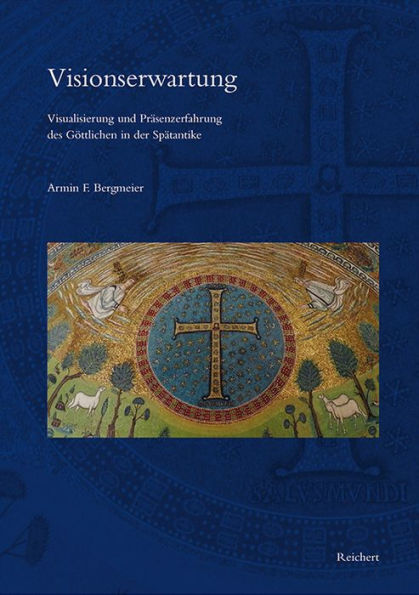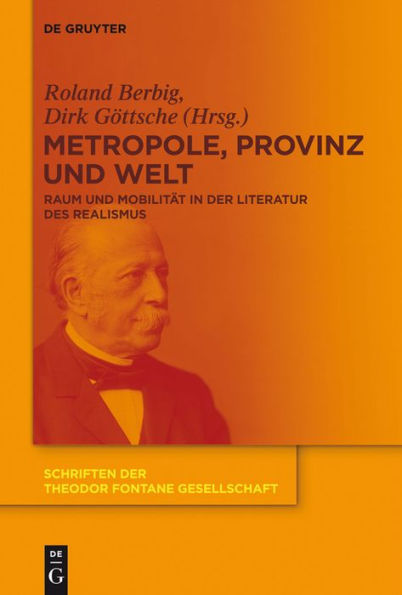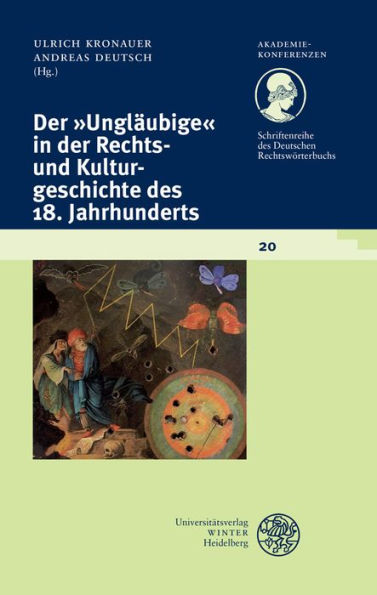Home
Visionserwartung: Visualisierung und Prasenzerfahrung des Gottlichen in der Spatantike
Loading Inventory...
Barnes and Noble
Visionserwartung: Visualisierung und Prasenzerfahrung des Gottlichen in der Spatantike
Current price: $147.00


Barnes and Noble
Visionserwartung: Visualisierung und Prasenzerfahrung des Gottlichen in der Spatantike
Current price: $147.00
Loading Inventory...
Size: OS
*Product Information may vary - to confirm product availability, pricing, and additional information please contact Barnes and Noble
English summary: This book explores the emergence of images of God in Late Antiquity, pulling on a long tradition of important works by Johannes Kollwitz, Friedrich Gerke, Frederic van der Meer, Christa Ihm, Hans Belting and Jean-Michel Spieser. Expanding the state of research to include an analysis of the cultural background that led to the depiction of God, Bergmeier argues that Late Antiquity struggled with how to negotiate the Old Testament ban on images of God alongside the desire ("Visionserwartung") to have direct contact with the deity. Late Antiquity solved this paradox by depicting ephemeral visions of God, which made possible the close contact so desired. Bergmeier's research corrects a lacuna in art history, which has largely ignored the immense influence of visions in the history of the production of images. Until now the discipline has failed to recognize the full array of visionary motives and their complex, interrelated nature. The publication explores the various strategies used by late antique image-makers to visualize God, demonstrating how, on the one hand, antique visual formats were adapted for this new purpose and how, on the other, new visual solutions emerged to meet the needs of depicting the Christian God (Part Two). In contrast to the majority of early Christian images, which relied heavily on pagan models, these theophanic motives often represented new visual innovations. Finally, Bergmeier explores the phenomenological impact of images-how they created an experience of real visions. Late antique concepts of encounters with the holy are placed into dialogue with early Christian understanding of sacred spaces to demonstrate how these images produced meaning for their viewers (Part Three). Expanding upon the phenomenological research on late antique images of God, Bergmeier comes to an important and revolutionary thesis: while scholarship has assumed that these holy visions of God were depictions of a future moment, close analysis of Late Antique texts reveals that these visionary images were understood by contemporaries as images of the present moment. More than an iconographic study of theophanic images in Late Antiquity, Bergmeier's research explores for the first time the cultural history of the emergence of images of God from c. 300-750, drawing on detailed study of texts and images in equal measure (Part One). Bergmeier mobilizes theological, historical, and religious studies scholarship, connecting textual research on antique images of the gods with scholarship on Christian culture in Late Antiquity. By not only highlighting the importance of images of God in late antique culture, but demonstrating their fundamental significance as modes of direct engagement in the present moment with the otherwise invisible God, Bergmeier's scholarship radically reshapes the field of late antique art history. And through its interdisciplinary mode of inquiry, the book promises to transform our understanding of Late Antique culture. German description: Dieses Buch untersucht die Entstehung des Bildes Gottes in der Spatantike. Es reiht sich damit in eine Reihe wichtiger Publikationen Johannes Kollwitz', Friedrich Gerkes, Frederic van der Meers, Christa Ihms, Hans Beltings und Jean-Michel Spiesers ein. Erstmalig werden hier die kulturellen Hintergrunde analysiert, die den Bildfindungsprozess bedingten. Die Losung fur die Frage, wie das alttestamentliche Darstellungsverbot befolgt werden und gleichzeitig die visuelle Annaherung an das Gottliche erreicht werden konnte, fanden die spatantiken Bildschopfer in den Vorstellungen des Visionaren, genauer in ephemeren gottlichen Visionen. Diese wurden in der christlichen Kultur der Spatantike derart dominant, dass man vom Phanomen der Visionserwartung sprechen kann. In der Kunstgeschichte ist der immense Einfluss, den Visionen auf die Bildproduktion hatten bisher nicht erkannt worden, und die Fulle an motivisch zum Teil sehr unterschiedlichen visionaren Bildern ist bisher nicht in gegenseitiger Abhangigkeit untersucht worden. Die Publikation führt verschiedene Strategien zur Sichtbarmachung des Gottlichen vor und legt dar, wie diese teilweise aus der antiken Bildsprache entwickelt wurden, teilweise innovative eigene Losungen der spatantiken Bilderschopfer darstellen (Teil II). Im Unterschied zum Grossteil der fruhen christlichen Bilder, die antike pagane Bildentwurfe modifizierten, waren die theophanischen Bildmotive, Bilder der Erscheinung des Gottlichen, oftmals Neuschopfungen. Schliesslich wird der phanomenologische Aspekt der Bilder, die Erfahrung einer realen Vision, in Bezug auf Sakralraume und spatantike Konzepte der Begegnung mit dem Gottlichen untersucht (Teil III). Aus diesen phanomenologischen Uberlegungen und gestutzt auf die Analyse spatantiker Texte weist Bergmeiers Publikation nach, dass die untersuchten Darstellungen allesamt Bilder des Gottlichen in der Gegenwart sind. Die bisherige Forschung geht zumeist davon aus, dass die visionaren Bilder ihre Motivik aus zukunftigen, endzeitlichen Vorstellungen speisen. Die eindeutige Zuruckweisung solcher Lesarten wird die Erforschung der spatantiken Kunstgeschichte nachhaltig beeinflussen. Das Buch geht uber rein ikonographische Untersuchungen hinaus, indem es sich um die kulturgeschichtliche Einordnung des Phanomens gottlicher Visionen in der Spatantike bemuht und in interdisziplinarer Weise neben Bildquellen ausfuhrlich auch Textquellen untersucht (Teil I). Bergmeier bezieht theologische, historische und religionswissenschaftliche Forschung ein und baut eine Brucke zwischen der Forschung zu antiken Gotterbildnissen und der Erforschung der christlichen Kultur der Spatantike. Der interdisziplinare Ansatz setzt wichtige Impulse fur zukunftige Forschungen und wird unser Verstandnis der spatantiken Kultur revolutionieren.


















